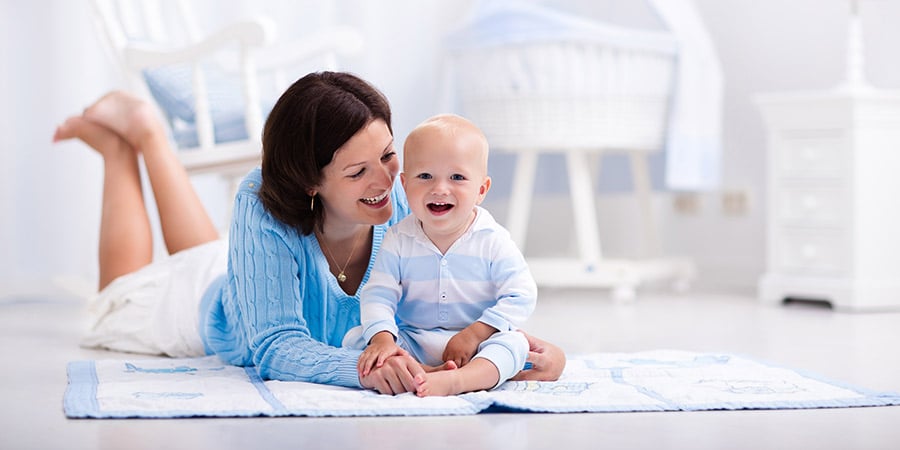Creating a safe and healthy space for your little one is a top priority. This extends to everything in your home, including the humble play mat. Those brightly colored squares quickly become a home base for tummy time, crawling adventures, and epic toy battles. But have you ever stopped to think about what chemicals your child is getting exposed to?
Key Takeaways:
- Traditional play mats can contain harmful chemicals like phthalates, lead, and formaldehyde, which pose health risks to children.
- Choose mats made from safe materials such as organic cotton, cork, natural rubber, or thermoplastic polyurethane (TPU).
- Look for organic cotton, cork, natural rubber, or TPU materials.
- Notable for non-toxic play mats are Organic Designs, Lillefolk, Little Bot, Easy Baby, and YOOVEE.
- Certifications from organizations like GOTS, OEKO-TEX Standard 100, and GREENGUARD provide additional safety assurance.
This guide will help you select the safest and most suitable play mat for your child, focusing on health, durability, and functionality. It includes a list of top picks that meet high safety and quality standards.
What Makes a Play Mat Non-Toxic?
Traditional play mats can be breeding grounds for harmful chemicals.
A study published in 2020 found that some PVC play mats contained concerning levels of phthalates, which are endocrine disruptors linked to developmental issues and hormonal imbalances. Other potential culprits include lead, which can damage the nervous system, and formaldehyde, a known carcinogen.
These chemicals can off-gas into the air, especially when heated, and be absorbed through a child’s skin. Even low-level exposure can be detrimental, so opting for a non-toxic play mat becomes crucial.
The foundation of a non-toxic play mat lies in its materials. Here are some great options to choose from:
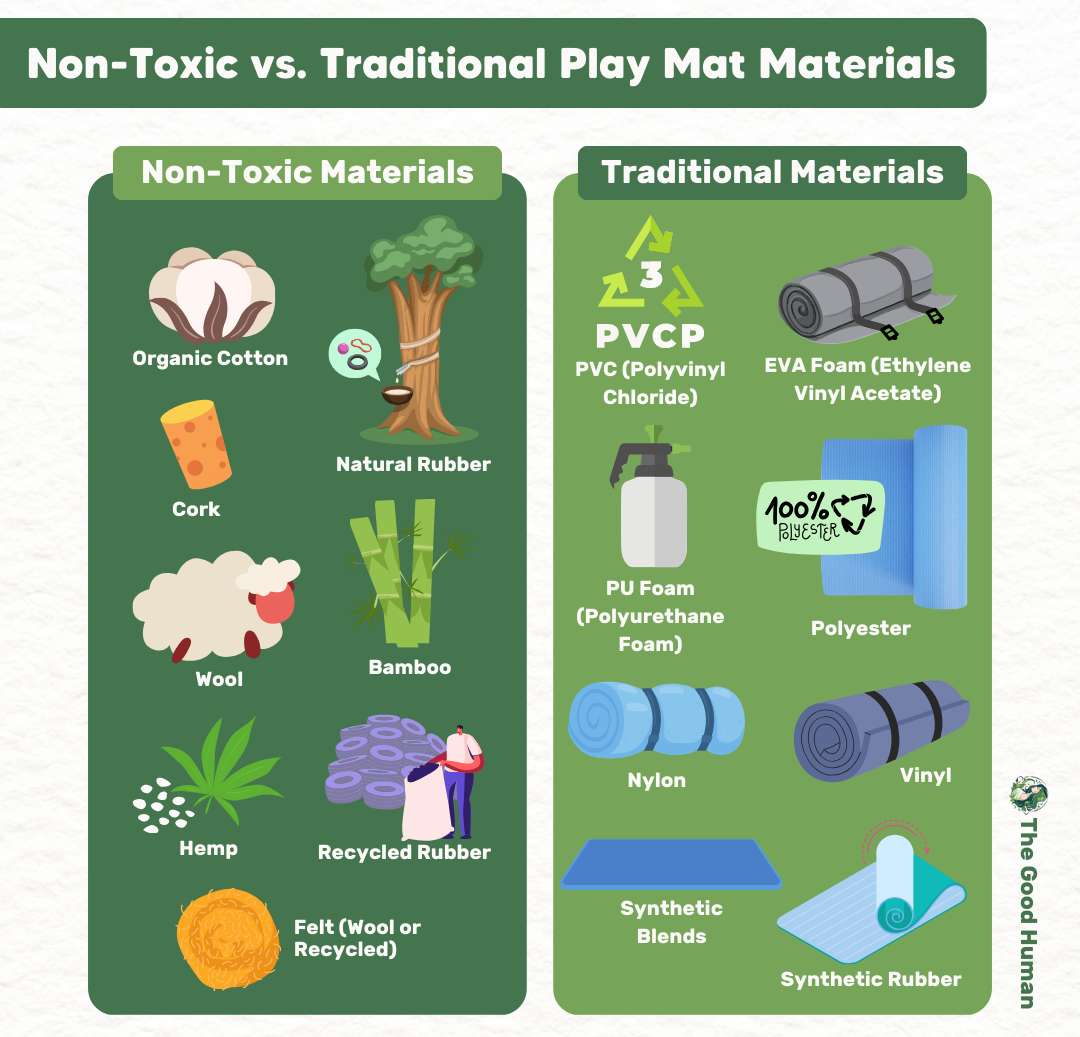
Understanding the Chemicals Found In Baby Play Mats
1. PVC (Polyvinyl Chloride Foam) and Dangerous Phthalates
PVC and phthalates are harmful because they disrupt hormones and can be absorbed through the skin or inhaled and ingested. PVC mats pose a risk to your baby’s delicate skin.
2. Flame Retardants
Flame retardants, known as polybrominated diphenyl ethers, can harm young children’s health, leading to early puberty or delayed development.
3. BPA (Bisphenol A)
BPA, used in making plastics, can enter the human body if swallowed. Young children are especially at risk of BPA exposure because they tend to put things in their mouths.
4. Formaldehyde
Formaldehyde is a clear and water-like acid, gas, or liquid. It’s a common ingredient in pesticides. Ingesting it may result in loss of consciousness or sudden seizures.
5. Formamide
Formamide is a vicious, colorless liquid with a slight odor of ammonia. Exposure to it can cause severe skin and eye irritation. It can also significantly affect reproductive fertility.
6. Latex
Latex is commonly used in workplaces in the form of gloves. It is an irritant that can cause allergies, skin problems, or asthma.
7. EVA (Ethylene-Vinyl Acetate) Foam
Traditional play mats are usually made of EVA foam or PVC. While EVA foam mats are softer and considered safer than PVC mats, EVA is a carcinogen that can release formamide.
8. VOCs (Volatile Organic Compounds)
Children are particularly vulnerable to the harmful effects of VOCs released by PU foam mattresses. Their developing organs and smaller bodies process pollutants differently, and with higher respiratory rates compared to adults, they inhale more air relative to their body weight, including higher levels of VOCs.
Moreover, children’s behaviors, such as crawling on carpets or putting toys in their mouths, increase their exposure to VOCs, making them significantly more susceptible to these toxic substances.
9. Lead and Other Metals
Lead and other heavy metals are commonly used in industrial, domestic, medical, and technological applications. Due to their widespread distribution and use, there is a growing concern over their dangerous effects on humans, causing multiple organ failure and cancer.

Certifications
While the material selection is essential, certifications add another layer of assurance. Look for play mats that have undergone rigorous testing by independent organizations such as:
Global Organic Textile Standard (GOTS): This certification guarantees that organic cotton fibers meet strict environmental and social criteria throughout production.
OEKO-TEX Standard 100: This globally recognized standard ensures textiles are free from harmful substances that could pose a health risk.
GREENGUARD Certification: This program certifies that products meet strict chemical emission standards, ensuring cleaner indoor air.
The landscape of safety standards is constantly evolving. As of 2023, the Consumer Product Safety Commission (CPSC) has implemented stricter regulations on lead and phthalates in children’s products. However, some loopholes still exist, highlighting the need to seek certifications from independent organizations that exceed basic safety standards.
Top Non-Toxic Play Mat Products of 2024
While it’s true that you may not be able to protect your kids from all the hazards in your home, you still have the power to control certain situations inside your household. With this in mind, choosing the best, safest, non-toxic play mat is necessary.
Here’s a list of the top ten best non-toxic play mats and a buying guide.
1. Organic Play Mat By Organic Designs
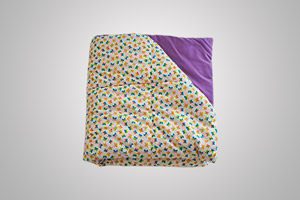
The Organic Play Mat by Organic Designs is handmade in the USA and is filled with organic filling. This non-toxic play mat is backed with organic flannel to warm your baby during winter nights and can give your baby the best sleep and the healthiest and safest play space.
This organic cotton play mat can easily be folded. It weighs 4.2 pounds and can easily be thrown into your washing machine. When you order this play mat, it is not pre-washed to preserve its organic state. It’s best to wash it in cold water if you need to clean it. Consider a shrinkage rate of 3-5%.
Pros
- Suitable for newborn until toddler stage
- It stays in place (doesn’t slide)
- Doesn’t bunch up when placed on hardwood floor
- Manufacturer accepts returns for unwashed or unused products within 14 days
Cons
- It is more of a comforter than a play mat
- Expect size shrinkage when washed
- For return items, the customer will shoulder the shipping cost and will not get a refund.
2. Lillefolk Stylish Foam Play Mat
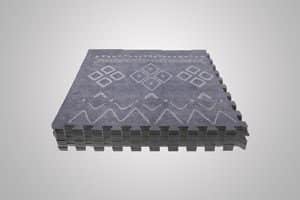
The Lillefolk Stylish Foam Play Mat is perfect for stylish parents. This Scandinavian-designed, non-toxic baby play mat is inspired by Swedish minimalism and comes in neutral colors and designs to blend into your home and playroom decorations easily. It is also double-padded and 100% waterproof.
This Lillefolk Play Mat is safe to be used as nursery flooring for babies. It is soft and cozy for your baby and perfect for tummy time, crawling, and sitting exercises. There are also no loose edges that can easily peel off.
It can easily be assembled and disassembled into 2ft x 2ft squares. Plus, it’s super easy to clean. Dirt can easily be removed with a damp cloth, which means there is less laundry!
Pros
- It comes in gender-neutral colors
- Easy to assemble and store
- Scratches caused by pets are hardly noticeable.
Cons
- Minor dents on some of the puzzle edges
- The puzzles should fit perfectly together consisting of 4 “middle pieces” and not “corner pieces”
- Slippery surface
3. Ofie Mat By LITTLE Bot
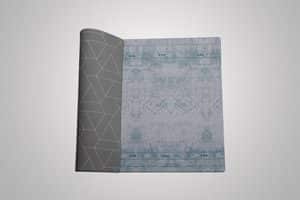
If you are looking for a play mat that can complement your busy lifestyle and provide a safe and comfortable space for your little one, then the Ofie Mat by LITTLE Bot is for you! It is the go-to mat of many parents. It’s inspired by Scandinavian artworks that focus on simplicity, functionality, and minimalism.
This non-toxic play mat is a large, single foam mat with reversible sides. It is vacuum-safe, but it can stain and scratch easily. Milk and urine marks can be visible on the mat.
You may need to wash it frequently. Rigorous tests have been made to ensure the safety of the Ofie mat. It is made of the highest standards in Europe and the USA.
Pros
- Stylish, soft, and foamy
- Easy to store inside a canvas bag
- Rounded edges are sealed
- It is a lightweight play mat.
Cons
- It may have curled edges
- In a closer view, it looks like plastic
- Slightly slippery
- Stains are visible on whites despite being washed.
4. Easy Baby Non-Toxic Foam Play Mat
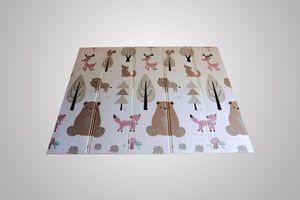
The Easy Baby Non-Toxic Foam Play Mat is a multi-purpose, extra-thick, and functional baby care play mat. It has a memory foam feel, keeping your child safe. It doesn’t only serve as your child’s play mat; it can also become an excellent floor piece when flipped over.
This play mat is very convenient because it is foldable and can be stored immediately. It is also waterproof – cleaning with a damp rug or wipes will do the trick. You can choose from three beautiful designs – dinosaurs, balloons, or animal designs.
Pros
- Print doesn’t fade
- Thick and cushioned
- Not slippery
- Lightweight, foldable and portable
Cons
- Rips easily
- Can be a choking hazard
- Not durable
5. YOOVEE Baby Play Mat
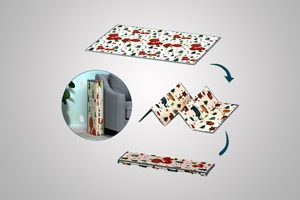
The YOOVEE Baby Play Mat has an anti-slip design that gives infants a better grip to help them learn to walk and crawl. It has a double-sided (reversible) pattern or design to ease visual fatigue in infants and toddlers.
This foldable mat easy to store and hand-carry during family trips. Unlike other play mats that need to be assembled, the YOOVEE play mat is a durable single-piece foldable mat. It’s a multi-functional, non-toxic mat that moms can use as a yoga mat or outdoor picnic blanket.
It is also 100% water-resistant. Spilled liquid and food can easily be wiped using a damp cloth, making a mother’s life easier. It comes in a high-quality storage bag, making it a wonderful birthday or baby shower gift.
Pros
- Lightweight and portable
- Easy to clean
- Large play area
- Comes in a zipped bag
Cons
- Can easily peel off
- Prints fade
- Choking hazard
6. Mergren Portable Extra Large Foldable Play Mat
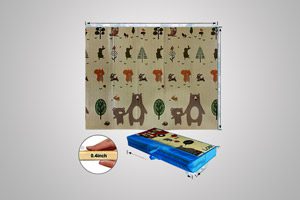
The Mergren Portable Play Mat aims to provide a safe play space for infants to crawl and play in. It has a double-sided pattern design that can spark your infant’s imagination and encourage their visual development. It has an anti-slip feature with a double “L” texture that can help your child crawl and walk without worrying about slipping.
The great thing about the Mergren Play Mat is its anti-shock feature that can protect your child from getting hurt when they fall. This mat is mom-friendly, too. It’s waterproof and easy to clean.
Its PE film prevents the baby’s urine or spilled milk from seeping in. However, you may need to clean the mat when you see any liquid because improper care can damage it.
Pros
- Easy to fold and store
- Large and spacious
- Reversible with two prints
Cons
- Dirt may stick on the textured squares
- Can easily be punctured
- Prints fade
7. PURITEX Biobased Eco Purimat Play Mat
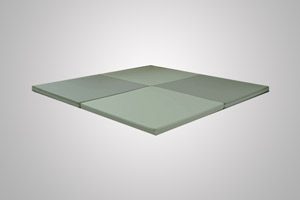
The PURITEX Biobased Eco Play Mat is made from innovative bio-PU fabric. It is eco-friendly and hypoallergenic, making it ideal or a baby’s delicate skin.
The amazing thing about the Puritex Biobased Eco play mat is that it comes in a 4-piece mat tileset. The mat tiles have Velcro on all edges for ease of assembly, and can easily be configured into different shapes and positions.
The Puritex Biobased Eco play mat is made from world-class, eco-friendly materials. It has acquired the United States Department of Agriculture (USDA) certified biobased product label. It also comes in gender-neutral colors of cream and modern grey.
Pros
- Comes in gender-neutral colors
- Can easily be assembled into different shapes
- Thick
Cons
- The velcros can be a scratching hazard
- Velcros can be less “sticky” over time
- Can be slippery
8. Bammax Play Mat
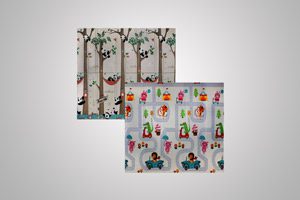
The Bammax Play Mat is an oversized mat that is ultra-cushioned and noise- and shock-absorbing. It is waterproof and easy to clean. It is also a multi-purpose activity mat that can be folded, easily stored, and reversible with two exciting patterns.
Bammax is also a large play mat that can be used indoors and outdoors. It is a good investment for babies who grow up fast.
Pros
- The print texture is raised instead of dent down
- Easy to clean
- Attractive colors and designs
Cons
- Rips easily
- Can easily be punctured
- Choking hazard
9. Skip Hop Baby Play Mat
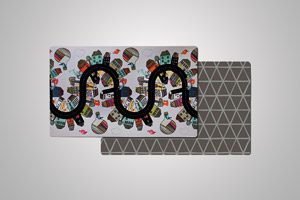
The amazing thing about the Skip Hop Baby Play Mat is that it is stylish, baby-safe, and functional. This mat can be used by babies as early as 0m+. It is waterproof and can be wiped clean. The play mat is reversible so you get two great designs in one product – a kid-focused design and a modern décor print as a home piece.
Another great thing about Skip Hop Baby Play Mat is the idea that it can be rolled up for easy storage and transport convenience. Plus, it’s waterproof and easy to clean.
Pros
- Large and spacious
- Non-slip
- Scratches are hardly noticeable
Cons
- Molds may grow under the mat
- Prone to cracks and could fall apart
- Can easily be punctured
10. Wee Gallery Forest Play Mat For Babies
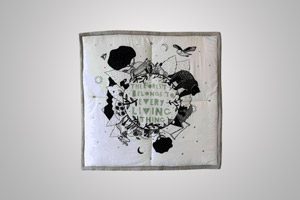
Wee Gallery Forest Play Mat features a hand-illustrated and high-contrast animal print on one side, while the reverse side features a calming and neutral pattern. The high-contrast designs can keep your baby interested and visually stimulated.
This mat is made of fabric, making it comfortable for tummy time and cushioned play. It has a drawstring bag that protects it from dust or harmful particles. The packaging is great for storage and a gender-neutral gift for baby showers.
This mat is not waterproof but can be thrown into the washing machine with warm water and tumble dry on low heat.
Pros
- Prints are great for baby’s visual stimulation
- Soft, thick, and fluffy
- Holds its shape even after several washes
Cons
- Suitable only for infant size
- Can easily stain
- Prone to tearing (fabric)
Benefits of Non-Toxic Play Mats
Beyond creating a safe haven for playtime, non-toxic play mats offer a multitude of benefits for both your child’s health and the environment. Let’s explore why opting for a non-toxic option is a win-win situation.
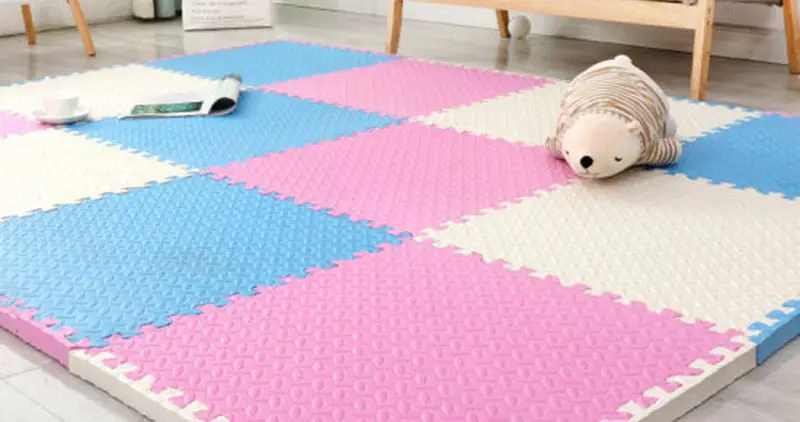
Health Benefits
Traditional play mats can harbor a hidden danger – toxic chemicals. The 2023 study, “Emissions of Formamide and Ammonia from Foam Mats,” explores a significant health concern for children.
The European Union has labeled formamide as a strong reproductive toxin, and together with ammonia, it is present in high amounts in children’s foam mats. Researchers have created an advanced technique to detect these emissions, finding very high levels of formamide and ammonia in several foam mats.
They discovered that the emission levels of formamide in some cases were greatly higher than EU safety limits, suggesting that formamide could persist as a contaminant in indoor environments throughout the product’s lifecycle.
The study’s exposure assessment for children aged 0.5 to 6 years highlighted that the youngest children, aged 0.5 to 2 years, face significantly higher risks of dermal exposure to these chemicals.
Safety Benefits
Non-toxic play mats often prioritize safety features alongside eco-friendly materials. These mats typically come with:
Cushioning – The padding helps absorb impact from falls, minimizing bumps and bruises during playtime. This is especially crucial for babies just starting to crawl and explore. A cushioned play mat could significantly reduce the risk of head injuries in falls from standing height.
Non-Slip Surfaces – A textured or grippy surface helps prevent slips and falls, keeping your little one safe as they crawl, scoot, and walk on the play mat.
These safety features provide peace of mind for parents, knowing their child has a safe and comfortable space to explore.
Environmental Benefits
Many non-toxic play mats are crafted from sustainable or recycled materials. This benefits your child’s health and contributes to a greener future. Here are some examples:
Cork Play Mats: Cork is a renewable resource that’s naturally antibacterial and shock-absorbent. Harvesting cork bark doesn’t harm the cork oak tree, making it a sustainable choice.
Recycled Foam Play Mats: Some play mats are made from recycled foam, giving new life to post-consumer waste. This reduces reliance on virgin materials and helps minimize landfill contributions.
Buying Guide: What to Look For in a Non-Toxic Play Mat
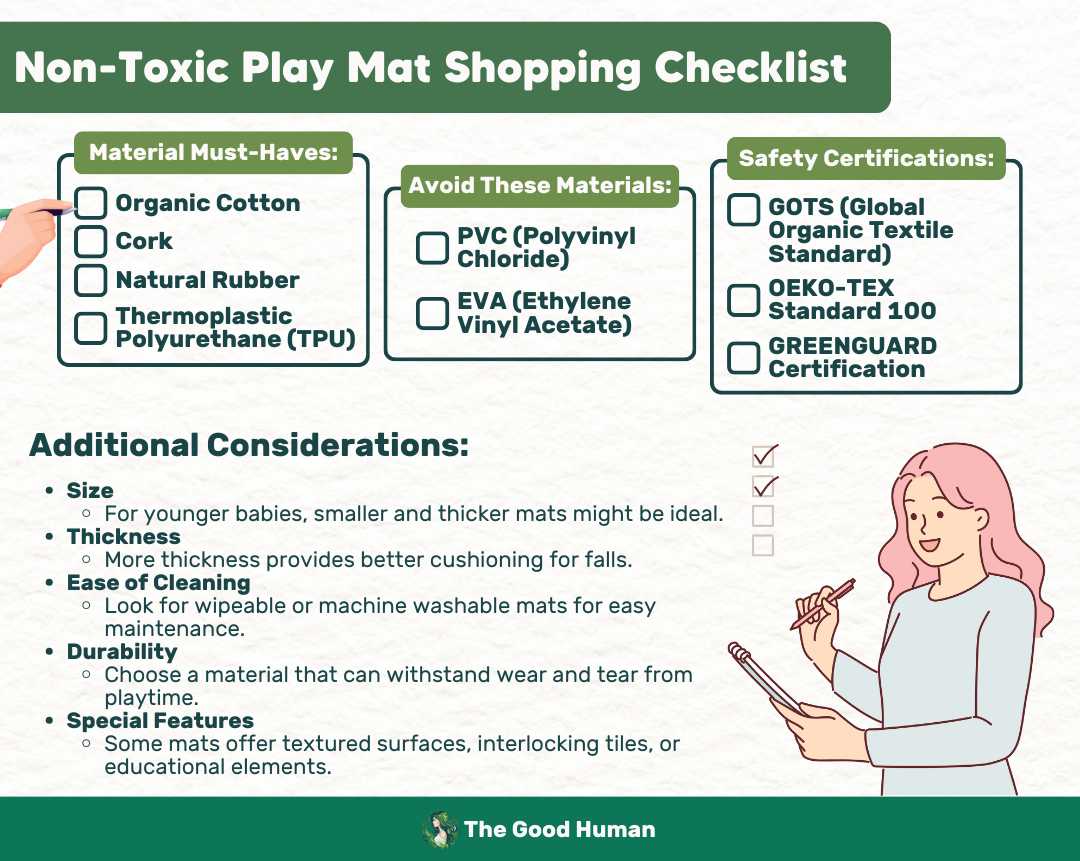
So many play mats in the market claim to be safe or non-toxic. There are so many options that you are left feeling confused and overwhelmed.
So, before heading to the mall or checking out a play mat online, you must do your research. Here are some buying tips on what to consider when buying a non-toxic play mat for your child:
Certified, Non-Toxic, and Eco-Friendly
The ideal play mat for your kids is unquestionably non-toxic. It should be eco-friendly and organically manufactured. Opting for a certified, non-toxic, and eco-friendly is an excellent way to ensure your little one is exposed to fewer chemicals and dirt.
When considering non-toxic materials, this means that the materials used in manufacturing the play mats don’t contain EVA or PVC. The play mats must be free from BPA, lead, phthalates, and other hazardous chemicals. It should also be odor-free.
Recommended Materials
Cotton: Play mats that are made from 100% natural cotton are toxic and chemical-free. Natural cotton did not undergo any chemical processing or bleaching, making it a completely raw material.
Natural and organic cotton is soft and gentle to a baby’s sensitive skin. Using cotton for play mats lessens the risk of your baby developing skin problems like eczema, dermatitis, and skin allergies.
Memory Foam: Memory foams are naturally hypoallergenic and don’t cause allergies. Memory foam is great for all types of sleeping positions. However, memory foam is best for older children.
Baby play mats made from memory foam may not be advisable, for they are characterized by a natural and slow recovery feature.
This means the foam allows the body to sink onto the material while sleeping. Young children need firm play mats to maneuver their bodies easily.
Polyurethane Foam (PU): Play mats made of polyurethane are weather-resistant and easily cleaned. They are strong, long-lasting, and greatly absorb shock when babies fall down.
PU is considered one of the least dangerous materials in most baby products. You may purchase play mats made of PU, but ensure they are not treated with flame retardants, for they become flammable.
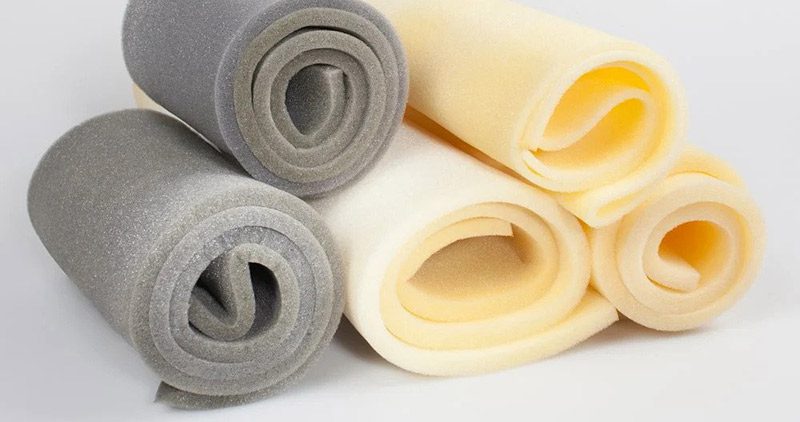
Recommended Size
The play mat should grow with the child. It should be large enough for the infant or toddler to use and actually play on. A play mat is an investment; thus, it should be usable until the child is around 4-5 years old or when they no longer need it.
The standard size of 5 feet by 7 feet is often preferred, offering ample space for various activities and accommodating the child’s growth and development over the years.
Protection Against Bumps and Falls
Babies are so dependent that they cannot manage to maneuver their bodies safely. Aside from encouraging the child’s development, the role of a play mat is also to protect them from physical hurt.
The ideal play mat should provide the child with adequate physical cushion or protection against bumps and falls.
The mat should be cozy, soft, and firm. If the play mat you plan to buy doesn’t address this concern, it is like saying to use a thick cotton blanket instead, and you can call it a day!
Easy To Clean
In choosing your child’s play mat, you must choose one that is easy to clean by simply using a damp cloth or a sponge soaked in water and soap. If the play mat is made of fabric, it should be washable and can fit inside your washing machine.
Durable and Long-Lasting
When buying a play mat, you know it is an investment and should be durable and long-lasting.
Choose a highly durable play mat, for it can be used by your baby during its early months and into toddlerhood. You can also reuse the mats when planning to have more children.
Caring for Your Non-Toxic Play Mat
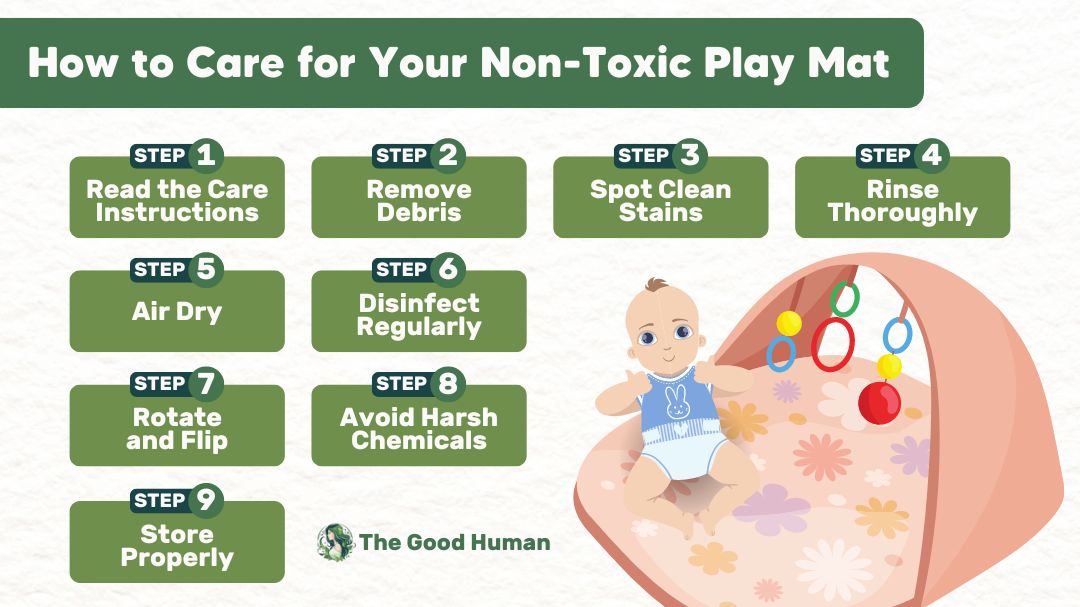
Once you’ve found the perfect non-toxic play mat, proper care ensures it stays safe and functional for years.
The good news is that most non-toxic play mats are relatively easy to clean. Here’s how to keep them sparkling fresh:
Daily Maintenance
A simple wipe-down with a damp cloth and a mild, eco-friendly cleaning solution is usually sufficient for everyday messes like crumbs or spills.
A vinegar and water solution can be just as effective as some commercial disinfectants at eliminating common household bacteria on surfaces. This DIY method is gentle on your play mat, eco-friendly, and budget-conscious! Mix equal parts white vinegar and water in a spray bottle and use it with a microfiber cloth for routine cleaning.
Spot Cleaning
For tougher stains, create a paste of baking soda and water. Apply it directly to the stain, let it sit for 15 minutes, then scrub gently with a soft brush. Rinse the area thoroughly with clean water and let it air dry completely.
Deep Cleaning
Some play mats can be machine washed, but follow the manufacturer’s instructions carefully. Opt for a gentle cycle with cold water and avoid using harsh detergents or fabric softeners. Air-dry the mat entirely before using it again.
Proper Storage
When not in use, proper storage helps prevent damage and prolongs the life of your play mat:
1. Roll It Up: Rolling them up for foam or cork mats is a space-saving solution. Secure the roll with a strap to prevent it from unfurling.
2. Lay It Flat: If your mat is foldable, lay it flat in a cool, dry place to avoid creases or warping.
3. Avoid Direct Sunlight: Exposure to direct sunlight can fade the colors and dry out the material. Store your play mat in a shaded area.
But even with proper care, all play mats have a lifespan. Here are some signs it might be time for a replacement:
- Visible wear and tear
- Loss of cushioning
- Presence of mildew or mold
By following these tips, you can ensure your non-toxic play mat remains a safe and fun haven for your little one for years. Remember, a little care goes a long way in keeping your play mat clean, durable, and eco-friendly!
Bottom Line
The vibrant world of play mats offers a designated space for our little ones to explore, learn, and grow. Choosing a non-toxic play mat is an investment in your child’s well-being, minimizing exposure to these chemicals and creating a safe haven for playtime.
Safety and quality should be top priorities when selecting a play mat. Look for materials free from harmful substances, certifications from independent organizations, and features that prioritize safety, like cushioning and non-slip surfaces.
The good news is that the play mat industry constantly evolves, with manufacturers prioritizing sustainability and safety through innovative materials and rigorous testing.
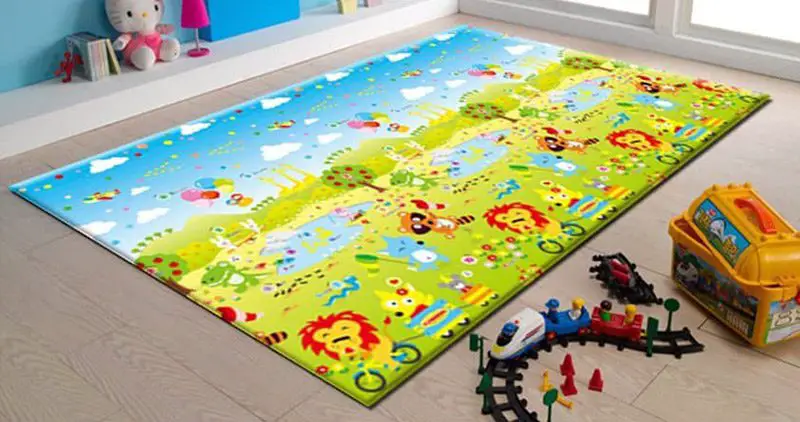
Frequently Asked Questions
What is the best material for baby play mats?
There isn’t a single “best” material, as each has its own pros and cons. However, some top contenders for non-toxic play mats include organic cotton, cork, natural rubber, and thermoplastic polyurethane (TPU). The ideal material depends on your needs and priorities. Consider factors like your child’s age, play style, and any allergies they might have.
Are play mats safe?
Traditional play mats can harbor harmful chemicals like phthalates and lead. These chemicals can be detrimental to a child’s health. However, non-toxic play mats made from safe materials and certified by independent organizations significantly reduce this risk.
Is rubber or silicone safer for babies?
Both natural rubber and silicone can be safe for babies when sourced responsibly and free from harmful additives. Look for natural rubber mats that are certified to be free from latex and other allergens. They offer excellent cushioning and slip resistance.

